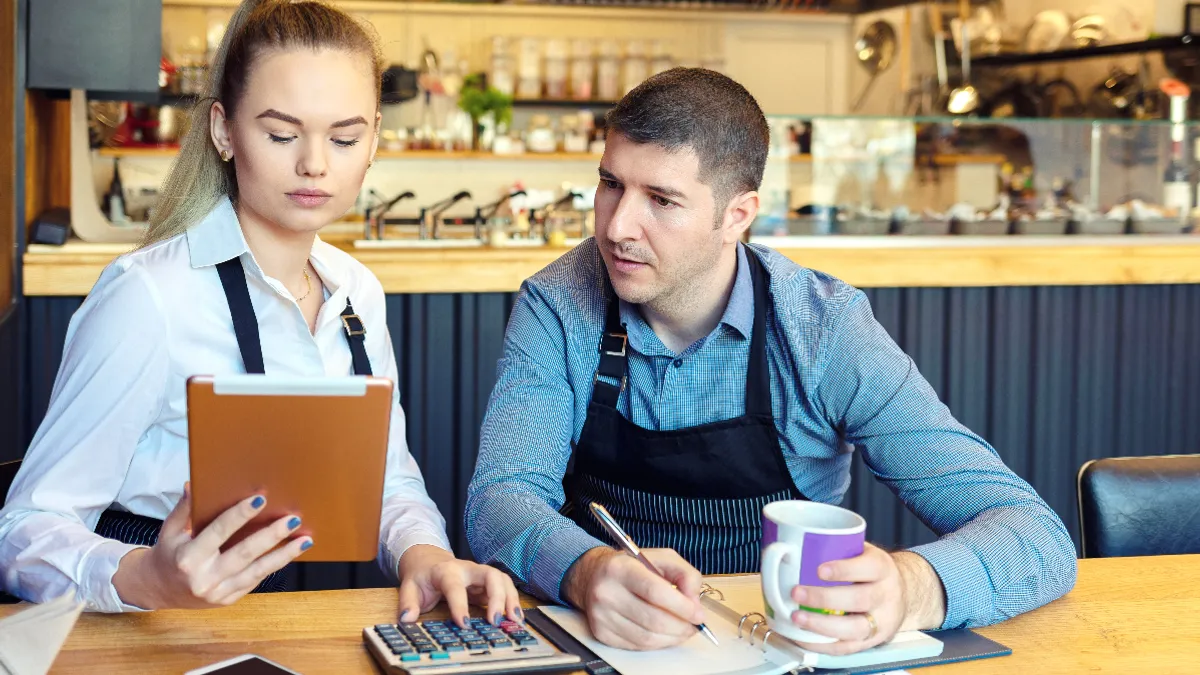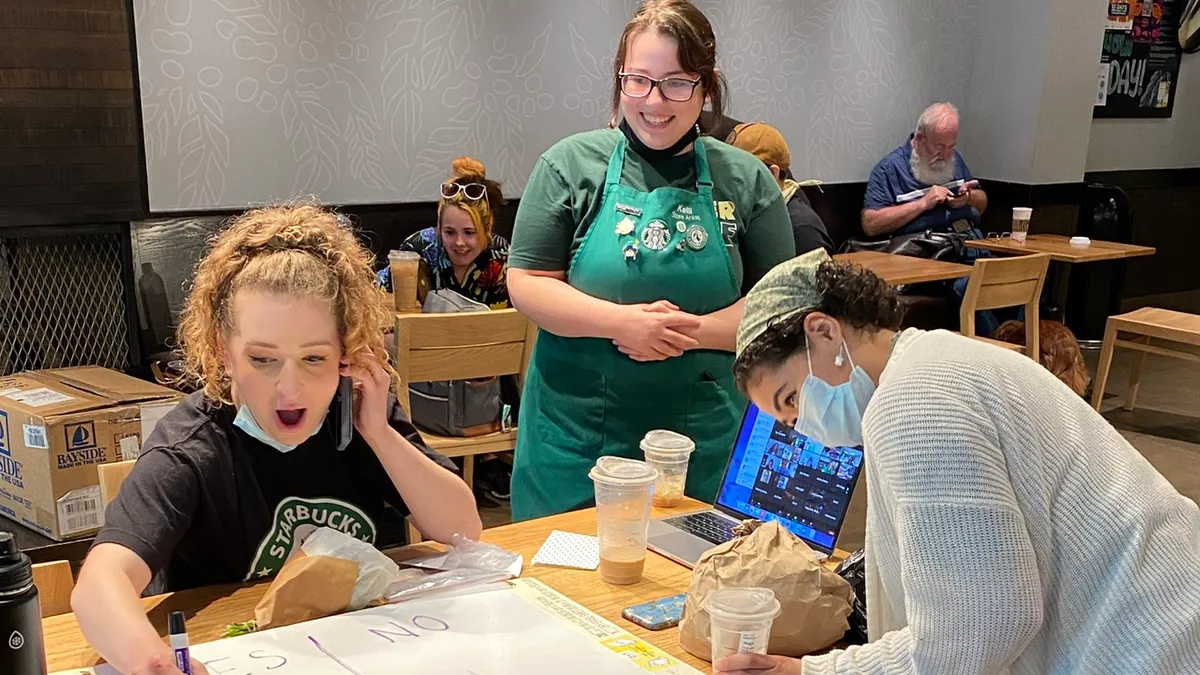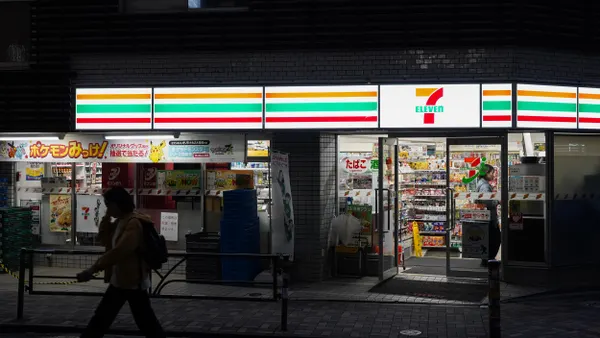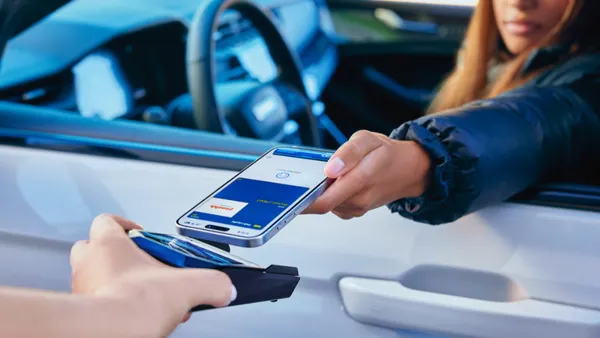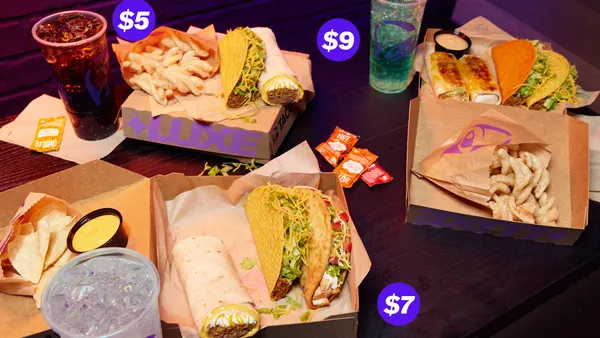Dive Brief:
- According to a new study, restaurants that invested $1 in reducing food waste saved an average of $7, Fast Company reports. These findings are based on the financial data of 114 restaurants in 12 countries.
- Restaurants included in the study reduced food waste by 26% after only one year and 58% after three years. Most businesses began to make changes by measuring food waste and scaling back production accordingly, placing smaller orders with suppliers or upcycling excess food into new meals. Ikea, which is a member of Champions 12.3 — a coalition aiming to halve food waste globally by 2030 that helped produce the report — has reduced food waste equivalent to 3 million meals so far.
- The National Resources Defense Council estimates that U.S. restaurants alone discard 22 billion to 33 billion pounds of food annually.
Dive Insight:
Ikea's restaurant is far from the only one making strides to reduce food waste. Starbucks Canada, for example, is countering consumable waste via its FoodShare donation program, which gives all available leftovers to those in need. But much of the industry's focus on cutting food waste has been on sustainability and boosting brand halos, not on the financial benefits these initiatives could reap. And with the average restaurant wasting about 75,000 pounds of food per year — an equivalent of $160 billion — there is certainly opportunities to boost sales for those who are creative enough to do so.
Consumer demand already aligns with these initiatives. Fifty percent of U.S. diners would pay higher prices to eat at restaurants with food recovery programs. But 41% of restaurants report that transportation burdens and fears about liability in terms of foodborne illnesses discourages them from repurposing or donating food waste. These concerns are largely unfounded, however — the Bill Emerson Good Samaritan Food Donation Act protects food donors in many cases.
Restaurants that are still dragging their feet about food waste donation should look to chains like Panera, which has been donating leftovers for years through its Day-End Dough-Nation campaign, and Pret A Manger as examples of how chains can seamlessly fit these programs into daily operations.
Chefhero and goMkt, an app that helps New York City-based businesses sell excess or day-old food items at reduced prices, suggest that restaurants shrink portion sizes, install compost bins, buy "ugly" produce that is normally rejected by grocery retailers and restaurants or partner with businesses that convert biowaste into fuel.
Third-party delivery companies could also be instrumental in food waste recovery. Postmates piloted a program in Los Angeles last year, according to a podcast episode of Marketplace, that sent a pop-up to partner restaurant's Postmates iPad apps asking if they'd like to donate leftover food at the end of the day. If restaurants select yes, drivers will pick up the food and drop it off at a nearby shelter. For now, the company is taking the delivery costs on itself, but eventually restaurants will have to pay a fee, which Postmates predicts will be around $10 or less. The Los Angeles program delivered 1,000 pounds of food in only two weeks, and more than 500 restaurants are now participating. The company plans to expand the program to new cities, and if the initiative continues to be successful, this could start a broader trend in the segment.



